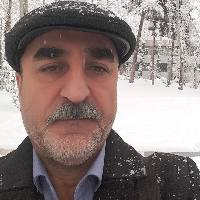Investigating mental patients’ referral pathways in Gilan province
Author(s):
Article Type:
Research/Original Article (دارای رتبه معتبر)
Abstract:
Introduction
Many people with mental health problems do not seek professional help but their use of other sources of help is unclear. This study conducted to determine the referral pathways in mental patients in Gilan, Iran.
Methods
In this cross sectional study, 308 mental patient's psychiatric patients who referred to the emergency department of Shafa educational – remedial Hospital located in Rasht, Iran (Only psychiatric hospital in Gilan province), were enrolled during the period January to March 2017. In the current study, as data collecting tools, a researcher-made questionnaire was employed. The questionnaire was completed during an interview. The questions were about socio-demographic characteristics of patients, psychiatric diagnosis, and the onset of the disease, age of onset of psychiatric patients, referral source, the first treatment method employed by the mentally ill, reasons for referring to non-medical staff. Collected data were analyzed using frequency tables as well Fisher's exact and Chi-square analyses. All statistical analyses were conducted using the software package SPSS 20.0(SPSS Inc., Chicago, Illinois).
Results
The mean age of the respondents 38.4 years (SD±12/9 years; Min: 5, Max: 75 years). Seventy-five (24/4%) respondents were female. The main reported information sources on the help sought were family 264 (85/7%) and Jurisdictions 31 (10/1%). First therapeutic approach employed by respondents were avow (33/8%), followed by traditional and faith healer (39/2%) and only 26/9% of them was medical team. The main reasons for the treatment options employed were recommendations from friends and relatives (46.3%), belief in a physical cause for the psychiatric disorder (14.2%), and fear of stigma (14%). Manner of the psychiatric disorder onset (gradually or sudden onset), age of patient, age at onset of psychiatric disorder, place of residence and income were significantly associated with the first employed approach (all P value were less than 0.05). But, others including gender, marital status, educational level, nationality and occupation status had not a significant effect on the first employed approach (all P value were more than 0/05).
Conclusion
According to our results, a large number of psychiatric patients prefer to visit non-medical practitioners (e.g. traditional and faith healers) at first, especially in rural areas residence, lower- income and older age at onset as well those who experienced gradual onset of disease. Non-medical practitioners had more likely to be approached first because of locally availability, belief that mental illness are caused by supernatural powers and other prevalent cultural belief and the stigma attached to mental illness.Keywords:
Language:
Persian
Published:
Iranian Journal of Psychiatric Nursing, Volume:7 Issue: 2, 2019
Pages:
65 to 73
magiran.com/p2006662
دانلود و مطالعه متن این مقاله با یکی از روشهای زیر امکان پذیر است:
اشتراک شخصی
با عضویت و پرداخت آنلاین حق اشتراک یکساله به مبلغ 1,390,000ريال میتوانید 70 عنوان مطلب دانلود کنید!
اشتراک سازمانی
به کتابخانه دانشگاه یا محل کار خود پیشنهاد کنید تا اشتراک سازمانی این پایگاه را برای دسترسی نامحدود همه کاربران به متن مطالب تهیه نمایند!
توجه!
- حق عضویت دریافتی صرف حمایت از نشریات عضو و نگهداری، تکمیل و توسعه مگیران میشود.
- پرداخت حق اشتراک و دانلود مقالات اجازه بازنشر آن در سایر رسانههای چاپی و دیجیتال را به کاربر نمیدهد.
In order to view content subscription is required
Personal subscription
Subscribe magiran.com for 70 € euros via PayPal and download 70 articles during a year.
Organization subscription
Please contact us to subscribe your university or library for unlimited access!



